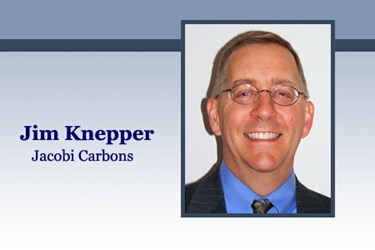Coconut Shell Activated Carbon

Jim Knepper, Vice President of Sales for Jacobi Carbons, discusses the growth of the Company and the advantages of coconut shell activated carbon in complying with the EPA’s disinfection byproduct phase II ruling.
The following is an excerpt from a Q&A with Water Online Radio. Click on the Radio Player above to hear the full interview.
Water Online Radio: Tell us about Jacobi Carbons?
Jim: From a historical perspective we have been in the carbon business since 1965. We are a Swedish-based company formed in 1916. In 1965 we started in the carbon business and from that time until about 1999 we were all in Sweden. It was a very provincial business.
Not too many people outside of the country knew about Jacobi. We had a management buyout in 1999 led by our current CEO Anders Skeini and since that time we have been the fastest growing activated carbon company in the market growing at a revenue rate of about 25% per year.
It started in the U.S. in 2001. Anders hired me to be the national sales manager of the company and grow the business. I think for the market here and the customers here they would probably be surprised to know that we are the largest worldwide manufacturer of activated carbon made from coconut shell.
While we have a pretty diverse product background I don’t think that most people in the business know that we produce about 30,000 metric tons or 75 million pounds of coconut shell activated carbon.
Water Online Radio: What’s the significance of your activated carbon being made from coconut shell?
Jim: Most significant for this particular market is the disinfection byproduct Phase II rule and the contaminants that the EPA has ruled and changed the ruling for in the phase two scenario.
Essentially we believe coconut shell to be the best GAC or activated carbon for removal because these are low molecular weight and very stable compounds. Other types of carbon that are more popular in the industry right now don’t operate quite as efficiently in terms of removal efficiency by the municipalities and the end users.
Water Online Radio: Are you looking at serving markets that have certain characteristics or can any municipality take advantage of what you have got?
Jim: Yes and yes I think is the best answer. We are not just about coconut shell. We have a whole range supplier of coal and anthracite coal, direct activated coal, lignite and well as wood-based activated carbons.
We are trying to grow each market segment or each market segment in this industry but in terms of municipal clients I would say that we tend to target municipal clients that have a specific need, a specific treatment need and are trying to increase their efficiency for removal of contaminant…
Click on the Radio Player above to hear the full interview.
